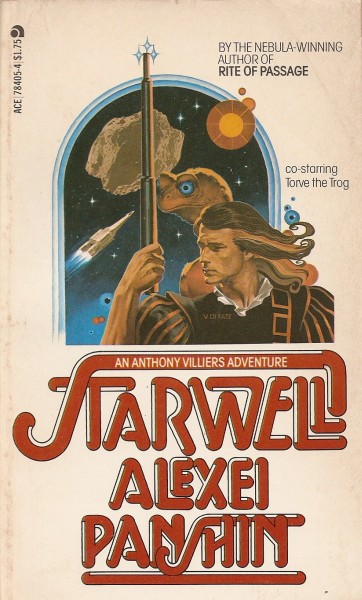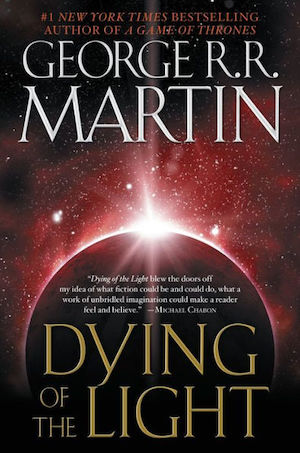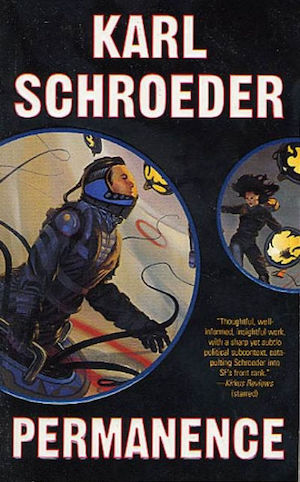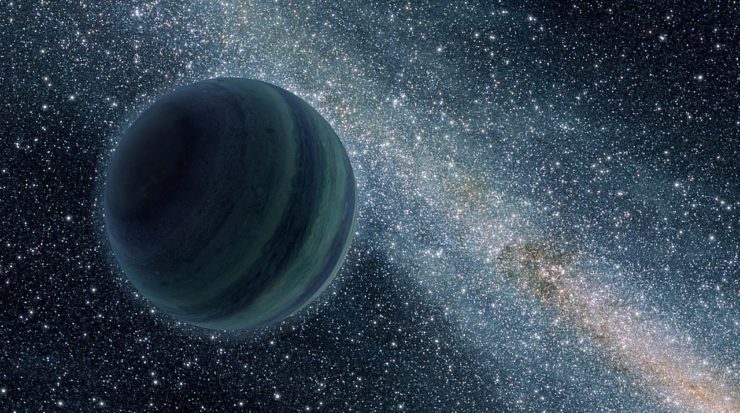It’s been weeks since you last socialized (in the flesh) with anyone outside your household…or with anyone, if you live alone. Loneliness is tough. But things could be worse: you could be a rogue world, ejected from your home system billions of years ago. You could be a pitiful world formed far from any star. Such worlds are commonplace in our galaxy. They are not quite so common in science fiction. Still, a few of them feature in books that you may have read…
Star Well by Alexei Panshin (1968)

The deep-space object around which the eponymous space hotel Star Well was constructed is well below the potato limit. The object is conveniently located in a vast gulf otherwise bereft of significant bodies—a handy place in which to build an oasis in space. A place where one might find hospitality and … other services. For charming remittance man Anthony Villiers, it is a convenient place to await funds, while artfully avoiding questions like “when are you leaving?” and “Can you actually pay your mounting bills?” His reluctance to admit insolvency raises grave suspicions in his hotelier hosts Godwin and Shirabi. What could possibly inspire Villiers to linger in a galactic backwater? Could it be that Villiers is a covert agent who suspects just what the…other services the criminal pair offer might be? Just to be on the safe side, it’s best to kill the young man. But Villiers proves inconsiderately hard to kill.
Dying of the Light by George R.R. Martin (1977)

The rogue world Worlorn is transiting the neighborhood of the supergiant star Fat Satan. For a brief time it will be a habitable world. Outworld entrepreneurs seized the opportunity to terraform the surface and market it as an exotic destination. Now Worlorn is on its way back out into the infinite dark; all life on the planet will die. Dirk t’Larien arrives on the doomed world in response to former lover Gwen Delvano’s call. He’s confident that he can handle anything this barbaric outpost of civilization can throw at him. His confidence may be misplaced.
Buy the Book


Dying of the Light
Permanence by Karl Schroeder (2002)

The Cycler Compact saw interstellar brown dwarfs and other rogue worlds as an opportunity. If rogue worlds are eight times more common than stars, then the distances between them are half as great. Linked by sublight cyclers, the Compact worlds enjoyed a golden age…until the invention of faster-than-light travel sidelined them. FTL trips have to be launched near a star, which left out the rogue worlds. Formerly well-located, prosperous communities became irrelevant.
Rue Cassels comes from one such deep-space community. She discovers an abandoned sublight ship—an alien ship. Her find is precious beyond compare. Others are willing to kill to possess it.
Buy the Book


Permanence
The Logical Life by Hal Clement (1974)
Laird Cunningham, avid explorer of alien worlds, encounters a stygian world in deep interstellar space. Lacking the sunlight that powers ordinary ecosystems, the world should, by rights, be frozen and lifeless. What he finds instead is a sunless world that hosts a rich assortment of lifeforms, including at least one species as smart as humans. Somewhere there must be a source of energy fueling life, but what could it possibly be? Assisted by a native, Laird will try to find out.
“A Pail of Air,” by Fritz Leiber (1951)
Perhaps my favourite rogue world story: Thanks to a chance encounter with a passing dark star, Earth itself has become a rogue planet. Most people died when Earth was torn away from the Sun. The few who survived soon froze to death. The lone exceptions: one young boy, his Pa, his Ma, and his Sis, huddled in the makeshift nest Pa scrabbled together before the Big Jerk. They alone survived Earth’s demise. So why does the young boy think he saw an unfamiliar human face?
It’s clear that under the conditions as stated, it’s just a matter of time before poor judgment or bad luck extinguishes the Nest. Why bother with the daily struggle to survive when a dismal outcome is assured? The narrative answers that:
“Life’s always been a business of working hard and fighting the cold,” Pa was saying. “The earth’s always been a lonely place, millions of miles from the next world. And no matter how long the human race might have lived, the end would have come some night. Those things don’t matter. What matters is that life is good. It has a lovely texture, like some rich cloth or fur, or the petals of flowers—you’ve seen pictures of those, but I can’t describe how they feel—or the fire’s glow. It makes everything else worthwhile. And that’s as true for the last man as the first.”
[…] “So right then and there,” Pa went on, […] “I told myself that I was going on as if we had all eternity ahead of us. I’d have children and teach them all I could. I’d get them to read books. I’d plan for the future, try to enlarge and seal the Nest. I’d do what I could to keep everything beautiful and growing. I’d keep alive my feeling of wonder even at the cold and the dark and the distant stars.”
The works I’ve discussed so far are a subset of rogue world stories: stories about naturally occurring rogue worlds. There are other sorts of rogue world. But that’s another essay….
In the words of Wikipedia editor TexasAndroid, prolific book reviewer and perennial Darwin Award nominee James Davis Nicoll is of “questionable notability.” His work has appeared in Publishers Weekly and Romantic Times as well as on his own websites, James Nicoll Reviews and Young People Read Old SFF (where he is assisted by editor Karen Lofstrom and web person Adrienne L. Travis). He is currently a finalist for the 2020 Best Fan Writer Hugo Award and is surprisingly flammable.










